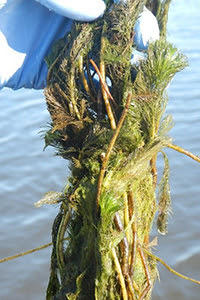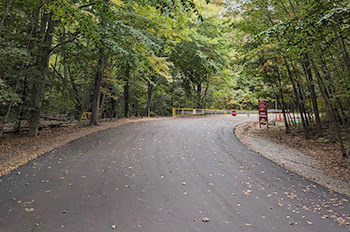Preventing the spread of aquatic invasive species in Michigan

Many aquatic invasive species – non-native plants and animals that can disrupt the natural ecosystem, tourism and the economy – are easily spread by boaters and anglers who use their equipment in multiple bodies of water without properly cleaning it.
As part of efforts to manage aquatic invasive species, a habitat enhancement project at Fort Custer Recreation Area in Augusta, Michigan, recently kicked off. The DNR is working with Kieser & Associates, an environmental science and engineering firm in Kalamazoo, on a plan to enhance the recreation area’s habitat by managing aquatic invasive species in its lakes. The project is funded through the Natural Resource Damage Assessment as part of the settlement levied against Enbridge Energy in connection with the July 2010 oil release on Line 6B into the Kalamazoo River.
In addition to aquatic plant surveys, which have found invasive species in all of Fort Custer’s lakes, the three-year project will include several different treatments to control these species. This will help determine the best long-term, cost-effective options for invasive species management in the lakes. The project also involves a public outreach and educational component to help park visitors understand their role in preventing the spread of aquatic invasive species.
You can help by following these simple steps:
- Clean boats, trailers and equipment.
- Drain live wells, bilges and all water from boats.
- Dry boats and equipment.
- Dispose of unwanted bait in the trash.
Learn more about preventing the spread of invasive species at michigan.gov/invasives.





